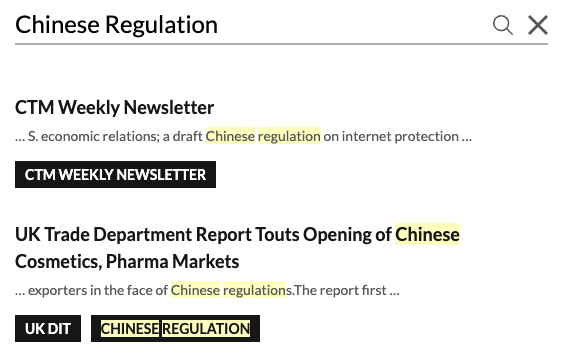A new report by the Atlantic Council's GeoTech Center entitled "Standardizing the Future: How Can the United States Navigate the Geopolitics of International Technology Standards?" provides some helpful background and insights on China's role in international standards organizations. The report explains that it "examines China’s engagement with standards setting and asks the following questions: How is China’s strategy for standards setting changing over time? Is there reason to worry that China may disproportionately impact the selection and enforcement of technological standards in the future? And what would that mean for US standards policy?"
In its introduction, the report notes that "[t]he world has paid special attention to China’s fifteen-year plan to increase its engagement in standards setting, released in 2020." This plan, called China Standards 2035, "reflects the Chinese government’s long-running view that standards are key to influencing technological markets and focuses on upcoming technologies and topics including artificial intelligence (AI) and digital privacy."
It then explains that, "[w]hile historically Europe, the United States, and Japan have dominated the standards-setting ecosystem for technology and data, with the rise of new technology hubs around the world, more countries are seeking a seat at the table in today’s SDOs [standards developing organizations]." In this regard, China "only entered the field in the late 1990s," but it "has steadily increased its scale of presence and participation ever since, in a trajectory that is coming under increasing scrutiny from the global community."
To address the concerns that have been raised about China's expanding role, the report includes a dataset that measures the participation of nine key countries in thirty-nine international SDOs that develop technology-related standards: the United States, Germany, China, Japan, France, Italy, South Korea, the United Kingdom, and Canada. To measure participation, the dataset "records the number of full voting members from the nine key countries in each SDO."
The report finds that the United States "dominates most international SDOs." Of the thirty-nine SDOs in the dataset, the United States "has at least 50 percent of votes in eleven bodies." By contrast, none of the other eight countries analyzed in the dataset have 50 percent representation in a single body. U.S. presence is the greatest in the most well-established SDOs. For example, in the IEEE Standards Association, "67 percent of the Standards Board members ... are American." The United States also "holds significant representation in key SDO subgroups: 56 percent of the IETF working group chairs and 45 percent of relevant ISO/ IEC JTC 1 subcommittee secretariats are American, respectively."
By contrast, in most international SDOs, China "has significantly less representation than the United States." And the dataset "indicates that China is currently not overrepresented in standards bodies, particularly given the size of its economy." Whereas Germany and the United Kingdom are "usually represented at levels just below the United States," China’s representation "is roughly equivalent to that of France or Japan, and often just a few percent more than either." China has "no representation in two of the thirty-nine SDOs included in the dataset"; and it "holds no relevant ISO/IEC JTC 1 subcommittee secretariats." However, China does hold significant representation in certain SDOs, as two bodies claim more Chinese membership than the United States: the 3GPP and Car Connectivity Consortium. Chinese representation is greatest with Rapporteurs to ITU-T Study Groups.
The report then elaborates on China's "SDO strategy" and "its implications for the rest of the world." It begins by noting that the Chinese government "has published a number of plans and white papers outlining its strategy for dominating technology markets and standards, the most influential of which focus on artificial intelligence and other emerging technologies." These plans, the report says, "aim to cement China’s status as a global technology superpower and ensure that the People’s Republic has a seat at the table as new global rules are set for technology, data, and innovation." Referring to the China Standards 2035 plan, the report says that "[t]he two core propositions in the plan are to increase the quantity of both Chinese-owned international standards and Chinese representatives in leadership and rapporteur positions at top SDOs."
The report notes that this plan "has sparked concern from many in the United States and around the world who fear that government pressure may harm the integrity of standards-setting processes and unfairly politicize standards to the detriment of companies, consumers, and other countries." However, the report then observes, "this concern is premised on the belief that China’s strategy to increase its involvement in SDOs will work." On this issue, it notes that "given the history, structures, and processes underpinning standards setting ... , merely increasing membership and standards proposals will not result in Chinese domination," as "[t]he structural integrity of SDOs is sound and has been proven time and time again."
Moreover, as the dataset shows, China is "currently not overrepresented in standards bodies, and an increase in membership will not translate into overrepresentation for some time." Rather, the United States and its allies, especially European countries, "continue to dominate SDO membership and leadership."
The report also says that "[p]acking standards bodies is a waste of resources that could be better directed to improving domestic capacity for high-quality technology and innovation." Thus, if the United States is concerned about "losing its foothold in technology standards," it should be focused on this question: "How can the United States ensure that US owned and developed technologies are the best engineered, most cost-effective, and most user-friendly?"

